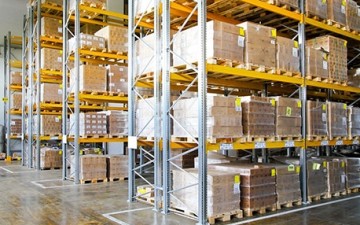Forecasting Practice in Manufacturing Business
The forecast is an effective tool for planning and managing any type of manufacturing business. Regardless of the industry type, it will reduce the risks.
You can also listen to this article:

Each organization continually pursues certainty in a significantly changing business world. We can see today new products in the market, others becoming obsolete, new technologies that revolutionize the ways of doing, customer preferences, fashion, laws and regulations, and so on. They push each organization to find ways to expect what happens in continuous hustle and bustle.
Yet, it is also true that every business has the means to organize data so that it can operate better in this changing global context. One of the tools to resolve this issue is the forecast.
What is the Forecast?
The forecast consists of the estimation of a given variable in the future.
The main goal is to anticipate what will happen in the immediate or mediate future. Forward forecasting is not a prediction, but a way to influence the future. Then it is possible to build a plan with the least possible variability.
The forecasts are applicable to different functions of the organization, such as for example:
- A Sales Forecast of a specific product or a family of products already in the market
- A Forecast to determine the volume demand of an innovative product
- A Financial Forecast for profit and loss statements, balance sheets and other cash-flow forecasts
- A Material Forecast to ensure all the resources meet customer demand in time and quantity
Time Horizon
Whenever we consider a forecast, it is necessary to determine the involved period of time. These periods can be classified in the following categories:
- Short term, going from a few days to a few months
- Medium term, from a few months to a few years
- Long term, considering several years
Depending on the demand pattern, it can be classified as trending, seasonal, cyclical, or erratic.
- The trending follows a continuous upward or downward pattern and is applicable for the long term.
- The seasonal pattern occurs when a series is influenced by seasonal factors and is predictable, generally throughout a year.
- The cyclical is similar to the seasonal with fluctuation of more than 2 years and is generally due to economic and political factors.
- The erratic pattern shows a random behavior and is composed of unexpected non-repeating events
Quantitative and Qualitative Forecast
There are basically two types of tools, quantitative forecast, and qualitative forecast. An example of a quantitative one is based on a historical data like the volume of sales last year, while a qualitative tool can be the opinion of experts about the development of a new line of products.
The quantitative techniques are based on models of mathematics and in nature are mostly objective. They are highly dependent on mathematical calculations, such as:
- Time series
- Regression Analysis
- Run Rate
On the other hand, the qualitative techniques rely upon the knowledge of highly experienced people. They provide insights into future outcomes. For example:
- Market surveys
- Delphi method
- Employee experience
Roles of Forecasting in Supply Chain Management
Forecasting plays three major roles in Supply Chain Management.
It’s a pillar in strategic planning
Forecasting is fundamental for Strategic Business Planning. They are used for financial planning, risk assessment, and business expansion. On the other hand, assumptions start from the forecasts like profit margins, cash flows, expenses, material turnover, etc.
It helps any organization to streamline the push system of the supply chain
Forecasting is the starting point for all push processes of the supply chain. They are used for material planning, procurement, inbound logistics, and manufacturing. On the other hand, the forecast helps to optimize the inventory levels and to increase the usage of the factory capacity.
It helps any organization to streamline the pull processes of the supply chain
Forecasting is the starting point for all the pull processes of the supply chain. They are used for order management, packaging, and outbound logistics. On the other hand, the forecast helps to optimize the distribution system as well as increase the customer service level.
Forecasting within Manufacturing Environments
To reduce variability and risk, every organization requires resources. These resources are labor, materials, energy, cash, etc., and they respond to the present and future demand. Let’s look at the example in which the material forecast is made.
Let’s assume an organization has a sales plan for the next quarter. This plan is used by the Planning team to generate the corresponding Master Production Schedule (MPS). The MPS is the basis to determine the amount of material that the organization requires each week or month for the next three months. For this, it is necessary to proceed with a Bill of Materials (BOM) explosion. The BOM explosion calculates the total number of required purchasable parts and materials. It allows materials to be combined following a defined routing to get a unit of production. The explosion considers:
- Quantities through a diagram of the parent-child relationship.
- Time factor, using backward scheduling. It starts from the manufacturing delivery date backward till the date of actual need in the factory.
The explosion can be established using ERP software. Finally, it is possible, to sum up all the materials that the organization will need in the future. It is also possible to add all existing plants, in the case of multi-site companies, in order to centralize purchasing orders.
It is also important to remark that it is possible to include or not the current inventory levels. In case the organization follows a Make to Stock (MTS) manufacturing strategy, material inventory will be included.
Summarizing, the material forecast allows to:
- Determine the resources required in the factory (machine, personnel, time)
- Calculate material requirements for building products (BOM explosion)
- Activate purchasing orders
- Create an inventory of materials to operate as a buffer against contingencies in the supply chain.
- Creating working orders
- Adjust and ensure compliance with delivery orders with customers and keep a high service level.
- Optimize the Capacity Level of the organization, considering machinery constrains
- Balance the workload.
Benefits of using Forecasting in manufacturing
- Follow delivery commitments to customers on time and in shape
- Determine idle capacity or overcapacity of the plant and balance it
- Increase administrative and operational efficiency
- Reduce the over inventory of raw material, WIP and finished product
- Optimization of the organization’s resources
- Product cost reduction and ROI increase
The forecast is an effective tool for planning and managing any type of manufacturing business. Regardless of the industry type, it will reduce the uncertainty and the risks of your business. In sum, it will contribute to making your company more competitive and get greater profitability.
You may also like: What Is Demand Forecasting and What Can MRP Software Do With It?




